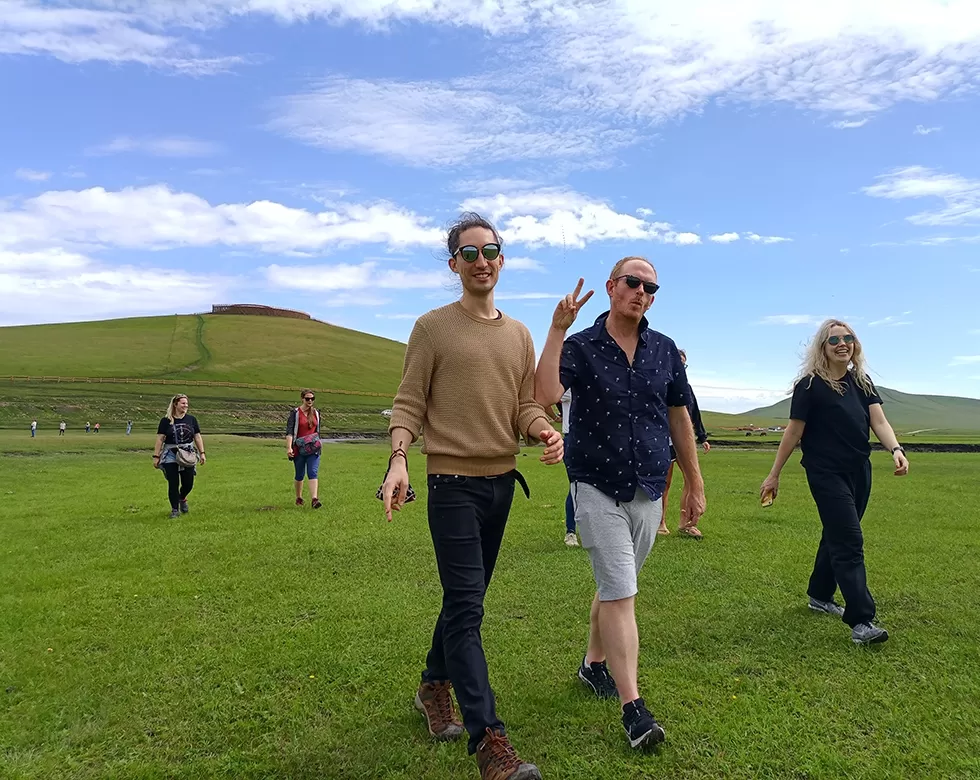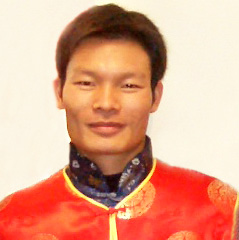Inner Mongolia Travel Guide: Attractions, Hotels, Meals, Itinerary...
The adjacent areas of Inner Mongolia, located in northern China, include the provinces of Liaoning, Jilin, and Heilongjiang(Harbin) to the east, the autonomous regions of Ningxia, Gansu, and Xinjiang to the west, the Inner Mongolia Autonomous Region to the south, and the independent country of Mongolia to the north, each offering its own unique cultural, historical, and natural attractions to visitors.
Why Inner Mongolia
1. Rich cultural heritage: Inner Mongolia is home to a diverse mix of ethnic groups, including Mongolians, Han Chinese, and Manchus. This unique blend of cultures has created a rich and diverse cultural heritage that is reflected in the region's art, architecture, music, and cuisine.
2. Stunning landscapes: Inner Mongolia is known for its breathtaking natural scenery, which includes vast grasslands, rolling hills, deserts, and rugged mountains. The region is also home to several lakes and rivers, making it an ideal destination for outdoor enthusiasts.
3. Unique experiences: Inner Mongolia offers visitors a range of unique experiences that are hard to find elsewhere. These include horseback riding across the grasslands, staying in traditional Mongolian yurts, and witnessing traditional Mongolian wrestling competitions.
4. Adventure activities: For thrill-seekers, Inner Mongolia offers a range of adventure activities such as sandboarding, rock climbing, and off-road driving.
5. Wildlife viewing: Inner Mongolia is home to a range of wildlife species, including wolves, foxes, deer, and antelope. Visitors can go on guided tours to see these animals in their natural habitats.
Brief History
Inner Mongolia is an autonomous region with a long and complex history. The region has been inhabited by various ethnic groups for thousands of years, including the Xiongnu, Donghu, and Xianbei.
During the Han dynasty (206 BCE-220 CE), Inner Mongolia was part of the Xiongnu Empire, which was a powerful nomadic confederation that controlled much of northern China. In the 13th century, the region came under the control of the Mongol Empire, which was founded by Genghis Khan and his successors.
After the collapse of the Mongol Empire, Inner Mongolia was ruled by a series of local kingdoms and tribes, including the Tumed and the Daur. In the 17th century, the Manchu Qing dynasty conquered Inner Mongolia and established it as a province of China.
During the 20th century, Inner Mongolia became a battleground for various political and military factions, including the Chinese Communist Party, the Nationalist government, and Japanese forces during World War II. In 1947, Inner Mongolia became an autonomous region, with Hohhot as its capital.
Since then, Inner Mongolia has undergone significant economic development, with a focus on agriculture, mining, and energy. The region is also known for its unique cultural heritage, including traditional Mongolian music, art, and cuisine.
Today, Inner Mongolia is home to several ethnic groups, including the Mongol, Han, and Manchu people.
What do visit in Inner Mongolia
The top attractions in Inner Mongolia include the beautiful Genghis Khan Square in Hohhot, the historical Wulan Tuolei Maza Alin Culture Museum, the stunning Inner Mongolia Museum showcasing the region's rich cultural heritage, the famous Xilamuren Grasslands known for its horse riding, sheep herding, and camping experiences, the iconic Baotou Steel Plant, the peaceful Xilitu Zuoqi Wetlands Reserve, and the stunning Huitengxile Grasslands which offer breathtaking views of rolling hills and meadows.
Top attractions in Inner Mongolia >>
Hotels, where to stay
Inner Mongolia is known for its rich cultural heritage, stunning landscapes, and pristine natural beauty, and it is home to a variety of top-rated hotels that offer comfortable accommodations, excellent amenities, and unparalleled views, such as the Shangri-La Hotel Hohhot, which is located in the heart of the city and boasts elegant rooms, a fitness center, and an indoor swimming pool, the Grand Hyatt Hohhot, which features spacious guest rooms, a comprehensive business center, and a variety of dining options, and the Inner Mongolia International Hotel, which offers luxurious rooms, a sauna, and a variety of recreational activities, making it a perfect destination for travelers seeking a unique and unforgettable experience.
Luxury hotels in Inner Mongolia >>
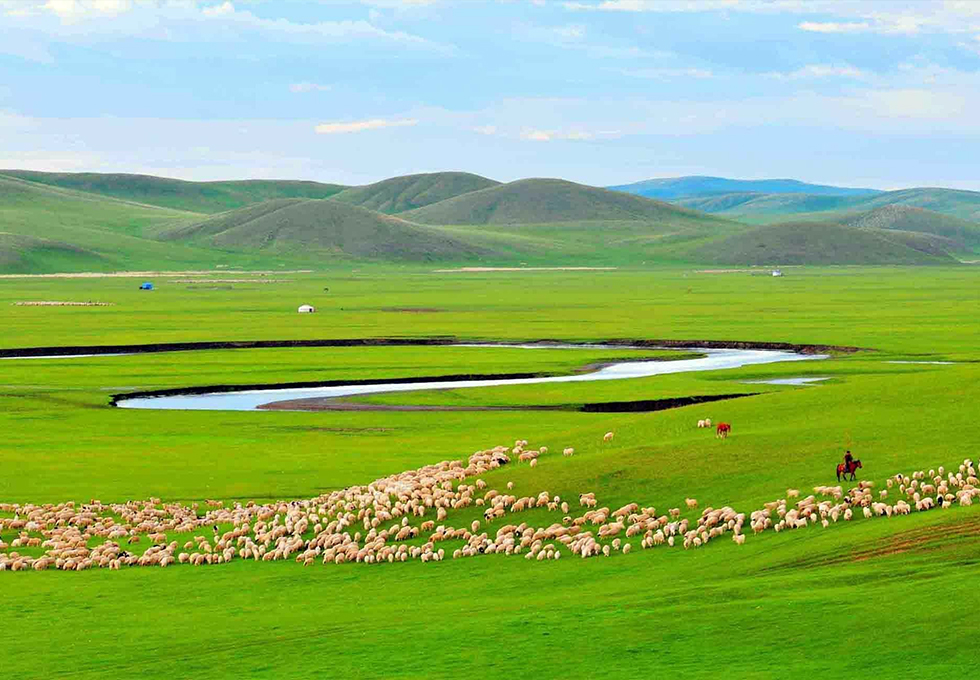 Hulunbuir Grassland
Hulunbuir GrasslandThe vast prairie is mainly located in western Inner Mongolia. Grassland is the very symbol of Inner Mongolia and it has long been the place that people pay tribute to and crave for. “Vast is the sky, boundless the wilds; sheep and cattle will emerge before your eyes.” “The beautiful grassland is my home; green grasses and colorful flowers are just like a carpet flowing with the blow of the wind.” “In the bluish sky float whitish cloudlets and beneath the whitish clouds gallops a drove of horses.” All these poetic and picturesque descriptions have long satisfied people’s yearning for visiting the grasslands. The Hulun Buir Prairie, Siklingelei Prairie and such pasture as Xilamuren Pasture are the best places to experience grasslands. In the pure and bright sky float low cloudlets; the vast and lush grasslands are scattered with white yurts; the air is all fresh; flocks and herds are everywhere. For the people that have long lived in the cities, they will be amazed by the scenery the grasslands have to offer.
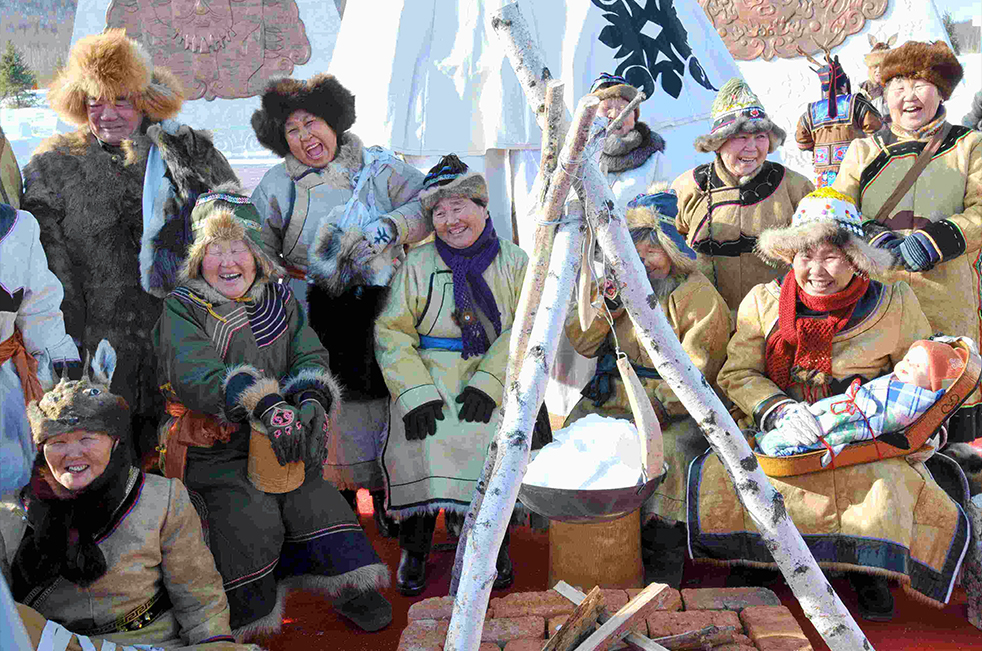 Oroqen People
Oroqen PeopleThe desolate desert covers the western region of Inner Mongolia. The desert is so distinctive that its scenery is magnificent. Deserts like the Badanjilin Desert-the most beautiful desert in China, the Tenggeli Desert and the Sand Resounding Bay in the Kubuqi Desert are swarming with a mysterious flavor of the northern-frontier scenery; the oases and lakes in the deserts are precious landscapes that won’t fail to attract visitors attention. Additionally, the poplar forests in Ejina, the ice stone forests in Asihatu, the vast stretch of forests in Aer Mountain and the vast Hulun Lake are representative of superb craftsmanship in nature.
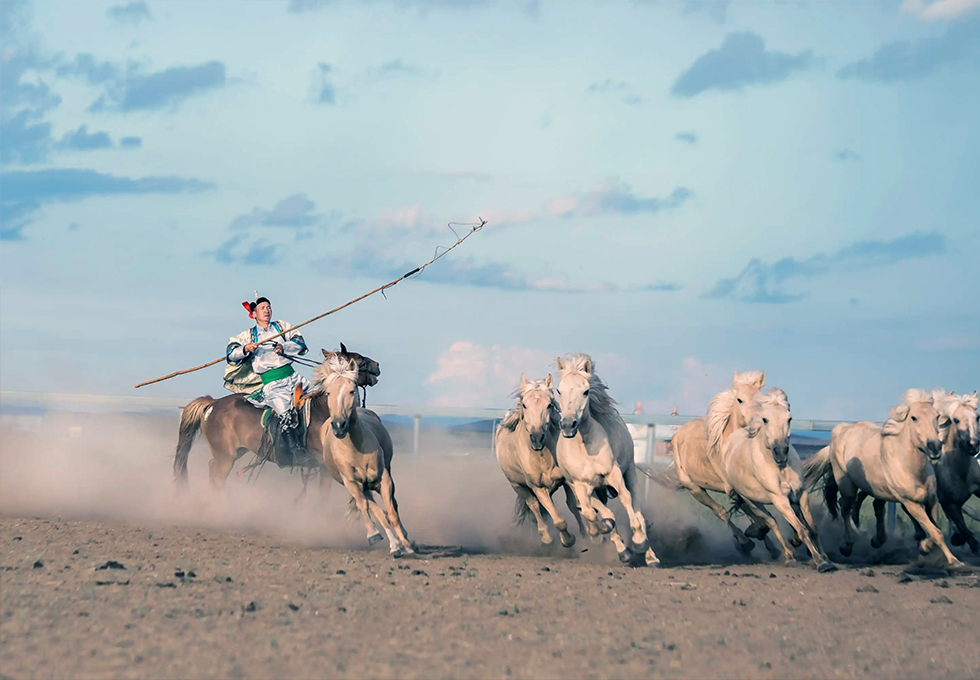 Mongolian Nomad Man Pole-Lasso
Mongolian Nomad Man Pole-LassoThe Mongolian was a nomadic group in the past. They made a living by grazing and hunting, thus granting them the name “a nation on the horseback.” The local people are simple and hospitable and they have maintained the most traditional and distinctive customs. The yurts, Nadam Fair and the local costumes are completely different from those inland. Inner Mongolia is also home to “the Proud Son of Heaven”-Genghis Khan and the place through which Lin Zhaojun went the west frontier region. Such dynasties as the Liao, Jin and Yuan once contended for political power in this land. It’s in Inner Mongolia that the Mongolia Empire gained its rise to power. There are a myriad of places of interest in Inner Mongolia, including: the Genghis Khan Tomb, Zhaojun tomb, Wudang Temple, Xilitu Temple and the Shangjing historical site of the Jin Dynasty, etc.
Interesting activities that can spotlight your trip
Inner Mongolia is a region rich in cultural heritage, and offers a variety of cultural hand-on activities for tourists to experience and immerse themselves in the local culture, such as learning about the traditional nomadic lifestyle by visiting a local Mongolian yurt, participating in traditional horseback riding and archery activities, tasting local cuisine such as roasted mutton and dairy products, observing the vibrant ethnic dance and music performances, and more. These activities provide visitors with a unique and authentic cultural experience and offer a deeper appreciation and understanding of Inner Mongolia's rich history and traditions.
More about Inner Mongolia activities >>
The best time to visit
The best time to visit Inner Mongolia would depend on personal preferences, but the most popular time to visit is during the summer months of June to August, as the weather is warm and pleasant, allowing for outdoor activities and scenic sights, such as exploring the vast grasslands and visiting local ethnic minority villages, while the spring and autumn months of May to June and September to October offer mild temperatures and colorful landscapes with the blooming wildflowers and red and yellow leaves of the poplar trees, respectively. However, it is important to keep in mind that Inner Mongolia can get very cold during the winter months, so proper clothing and gear may be necessary if visiting during that time.
The best time to visit Inner Mongolia >>
How to design your travel itineraries for Inner Mongolia
Starting from the capital city of Hohhot, one can visit the famous Dazhao Temple and explore the rich cultural heritage of the city before heading to the vast grasslands of Xilamuren for horse riding, camping, and traditional Mongolian hotpot dinner under the stars, followed by a visit to the nearby Tuvkhun Monastery to learn about the history and spiritual significance of Buddhism in Inner Mongolia, and ending the trip with a scenic drive to the stunning Gegentala Grassland to witness the beauty of the Milky Way and enjoy a bonfire dance performance before departing back to Hohhot.
Travel itineraries for Inner Mongolia >>

Useful information on Inner Mongolia
GREAT FAMILY CHINA TOUR
JULY 2024 We wanted to thank Grace at China Culture tour for organizing a great tour of China. We enjoyed our Beijing - Xian-Chengdu -Guilin -Yangshuo - Shanghai trip. Our local guides Bruce in Beijing, Susan in Xian, Jane in Chengdu, Mike in Guilin and Mary in Shanghai took care of us…read more details »
Teng Han L from SINGAPORE
Ready to Create a Unique Dream Travel?
